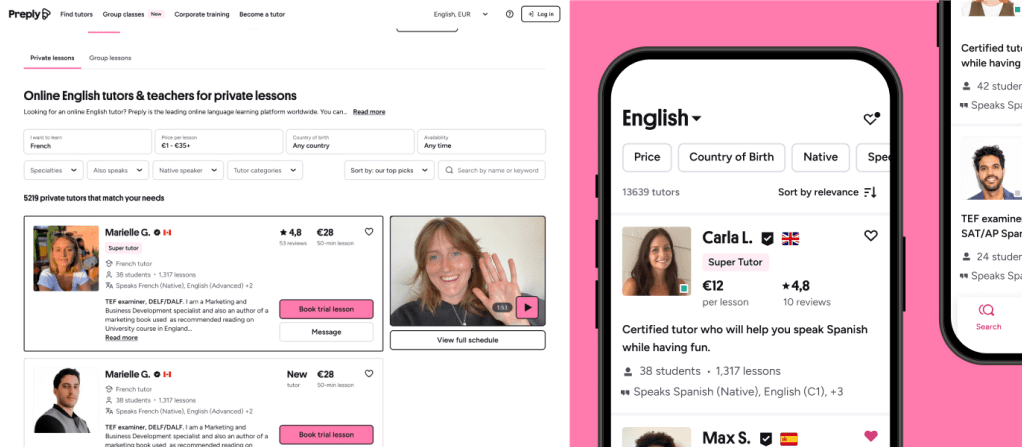Case StudyStream Team: Conducting Primary Generative Research - Continuous Research: The Qualitative Approach of Preply
Preply, a global platform for learning languages with tutors, faced the challenge of staying closely aligned with the evolving needs and preferences of their users. Traditional, periodic research methods were insufficient for capturing the dynamic nature of user behaviors and expectations. There was a need for a more agile and continuous approach to gather and act on user insights effectively.

The Solution
Preply adopted a strategy centered on continuous research. The key components of their approach included:
- Ongoing User Engagement: Preply maintained constant engagement with users through regular interviews, surveys, and feedback sessions. This continuous interaction ensured that the team was always aware of the latest user needs and pain points.
- Integrated Research Practices: Research activities were integrated into the daily workflows of cross-functional teams. Designers, developers, product managers, and researchers collaborated closely to ensure that user insights were continuously fed into the product development cycle.
- Rapid Iteration: Continuous research enabled rapid iteration on product features. The team could quickly test new ideas, gather user feedback, and refine their solutions based on real-time data.
- Diverse Methods: Preply employed a variety of qualitative research methods, including in-depth interviews, usability testing, and diary studies. This diversity in methods provided a comprehensive understanding of user behaviors and experiences.
- Actionable Insights: The focus was on generating actionable insights that could directly inform product decisions. Research findings were synthesized and presented in a way that highlighted specific recommendations and next steps.
- Feedback Loops: Preply established strong feedback loops between users and the product team. This ongoing dialogue allowed for continuous validation and improvement of product features.
Outcomes achieved
The implementation of continuous research led to several significant outcomes for Preply:
- Enhanced User Understanding: Continuous engagement with users provided Preply with a deep and up-to-date understanding of user needs and preferences. This ongoing insight was crucial for making informed product decisions.
- Improved Product Development: The integration of continuous research into the product development process ensured that user feedback was always at the forefront. This led to more user-centric designs and features.
- Faster Adaptation: The ability to rapidly iterate based on real-time feedback allowed Preply to quickly adapt to changing user needs and market conditions. This agility was key to maintaining a competitive edge.
- Increased User Satisfaction: By continuously refining their products based on user insights, Preply was able to enhance user satisfaction and loyalty. Users felt heard and valued, leading to stronger engagement with the platform.
- Innovation and Growth: The constant flow of insights from continuous research fostered a culture of innovation within Preply. The team was empowered to explore new ideas and take calculated risks, driving growth and improvement.
